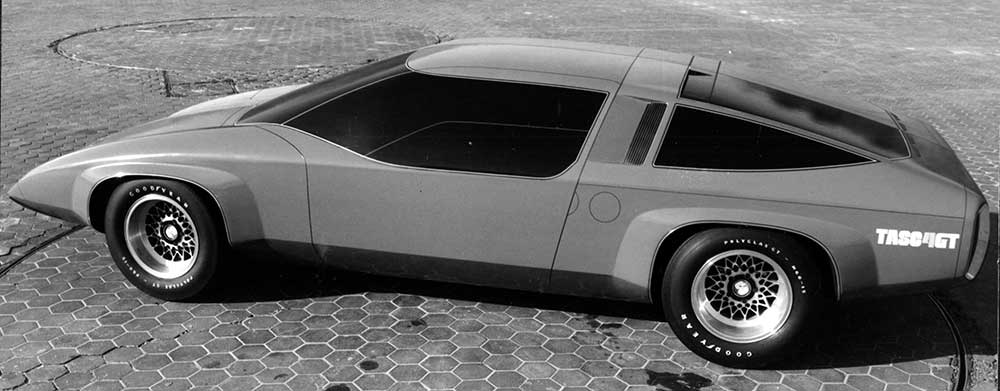
By Dick Ruzzin
My memories of: the General Motors X car, the Total Automotive System Concept to be known as TASC and the design of the TASC4GT.
The following took place at General Motors Design Staff, Overseas Studio, Studio X, International Studio, and at Opel Design.
While at Opel Design in 1971 I had the design opportunity of a lifetime. That was to create the theme for a low production high performance four passenger European coupe on an Opel platform. After a rapid four week design development program my design on a scale model was chosen to become the Bitter CD. I left for home and the very capable Opel designers carried the design forward.
I never dreamed that within a few months that opportunity would be a pale comparison to the growth experience that I would have in Studio X, being the only designer in the creation of the TASC4GT. It was a low four passenger rear engine super car, a Camaro proposal of my own invention that was accepted by management. I was the only designer to work on the car from start to finish. Although that was a long time ago, the memory of that effort by myself, Ray Hildebrandt my Sculptor and Nate Hall my Studio Engineer is still vivid in my memory. This is due to the extreme and unusual circumstances regarding the evolution of the TASC program and the effort by the three of us that resulted in a dynamic design concept, the TASC4GT.
The TASC program and the TASC4GT
In early winter of 1969 the Overseas Design Studio under the direction of Clare MacKichan and assisted by his Executive Engineers Jim Juif and Chuck Torner commenced an intense effort to convince the management of General Motors that the then current product direction of the corporation had to change. The oil cartel in the Middle East had attained the capability to stop or significantly diminish the oil flow to the West at any time. This threat was revealed by an internal report presented in Brazil at a GM European Strategy Board meeting. MacKichan as Director of Design for Opel in Germany was very well respected and had been made part of that group, he was asked to stay in the group when he returned to the U.S. Our very popular GM brands lacked fuel efficient models with the exception of the rear drive Chevrolet Chevette, an outdated Opel derivative.
At that point in time MacKichan was back home at Design, five years earlier he had been Chief Designer for Chevrolet and responsible for the 1955, ’56 and ’57 Chevrolets. He was a very intelligent and well connected executive and he knew how things worked within the Corporation. He had been sent to Germany by Harley Earl to start Opel Design, build the building and hire a design staff. Upon his return he had only one real ally at that time in North America, Ed Cole who had been Chief Engineer for Chevrolet. He also had the support of the President of GM Europe. Cole monitored our progress as time went on with personal input and communication from MacKichan and his boss, Bill Mitchell. As the internal Design Staff program developed others within the Corporation soon came to support it, Chevrolet Division, Engineering Staff, Research Laboratories and GM Europe. A new group at Design under Ken Pickering was formed to research customer input that could influence design and marketing through the use of aspiring customer attended product clinics. Earlier, another new group had been started at Design Staff to apply the latest aerodynamic science and knowledge to GM products, the first being the TASC Program Testing processes monitored and approved by Research Laboratories for drag, cooling,water management and sound reduction were invented, many are still being used, today. The first TASC car to go into production was a collaboration with Chevrolet. Their proposed Small Family Car (SFC), was aligned with the TASC 2, it would become the new X-Car. The intense effort and success by Design Staff would also show the need for the creation of a GM Corporate Planning Group. Car programs at Design Staff and within the corporation would never be the same again.
CLARE MacKichan, an engineer who became a designer
Clare MacKichan and his small staff at Design would turn General Motors around, a historic achievement. In 1971, three years before the TASC X car program was turned into a production effort, at the same small group in the Overseas Studio worked on developing the radical concept. The effort, started in 1969, was first called WORLD CAR but soon the scope expanded and it became the TASC (Total Automotive System Concept) Program, a new more inclusive and larger platform concept with three different widths and multiple lengths. No plan like this had ever existed at General Motors.
The TASC Program would revolutionize the future GM product line as well as the way products were conceived and executed for production. Interchangeability of components across three platforms was proposed to replace the current line-up with modern space efficient front wheel drive cars. An all out effort to convince suppliers to invest in low cost light weight components to help achieve the then considered unachievable level of fuel economy was proposed and started. An interior design group under the direction of Larry Faloon led this critical support effort. Adoption of the program required complete reorganization of the product development process and also the staffs doing the engineering and manufacturing work. A quantum leap forward, the concept would eventually be imitated throughout the auto industry.
The TASC Program was a proposed FWD International platform replacement for all GM sedans, wagons, coupes and future mini-vans and sports cars. A minivan was proposed with the TASC 2 platform in two wheelbases. It was modern as well as space and fuel efficient, but GM management did not have confidence in the new clinic data or the money to fund the program. Chrysler built the minivan, eight years later.
Returning to the USA
On December 4, 1971 I returned to Overseas Studio from Opel Design in Germany where I had spent six months, plus one extra week. There is no doubt that I was affected by the experience. My old boss, Ned Nichols, had been moved as the Chief of Overseas Studio. During my time away the studio had designed a two rotor Corvette based on an available Porsche 914 chassis, the body to be built in Italy at Pininfarina. Most of the design work on the car had been done by Kip Wasenko. While that was being done in Overseas Studio, Opel Design was also doing a proposed mid-engine rotary powered Opel GT, called the Opel GTR. I had done extensive work on that car but it was understood almost from the beginning that it would not go into production. The fiberglass model of the Opel GTR was recently revealed by Opel, as it was presented in their new museum display.
Returning to the U.S. and the Overseas Studio before Christmas in 1971, I made a sketch of a small rear engine rotary powered sedan, the power-plant and many components to come from the TASC 2 Program that was in development.
The Beginning of the TASC4GT
MacKichan saw the sketch and asked me to do a coupe version as he was very interested in the rear engine concept. The TASC program did not have an answer for the Camaro / Firebird. That was a deficiency in the concept as the sporty F cars required rear wheel drive. I quickly did a number of small thumbnail sketches and several quick full-size tapes. MacKichan was excited about everything that he saw and told me to start a scale model immediately, he did not choose a design. At that point in time he was giving me full freedom to go forward, to do whatever I wanted. Since it was a new combination of the TASC components I decided to call it the TASC4GT since it would be a four passenger Camaro / Firebird replacement. Rear engine would equate it with the new European mid-engine high performance exotics that dominated the global motoring press. Models from Lotus, Ferrari, Maserati Lamborghini and DeTomaso were all mid-engine. However, four passenger versions were rare due to engine weight, an advantage for the GM rotary engine.
I settled on a body section and a centerline profile from my sketches and full-size studies. Ray Hildebrandt, the Assistant Chief Modeler in the Overseas Studio was going to do the model for me. Ray was the best sculptor in the building, he was a very innovative and skillful artist, equal to any challenge. The scale buck was set up and when we put the centerline section on the modeling table we could see immediately that it as going to be an exciting car. Comparing the package to the new 1971-1/2 Camaro, the TASC4GT was slightly shorter and lower as well as a little wider. Front seating was equal but there was more room in the rear and more luggage capacity. The proportions were so dramatic on the full-size drawing that Ray and I decided to not cheat the model, but to use the real dimensions. This was unheard of at Design as all scale models and most full-size models were cheated in some way. We did not realize at the time the significance of this decision regarding the time that it would ultimately take to create the full-size model. We had eliminated all the future adjustment that would be required to meet interior space and engineering criteria when going full-size from a cheated scale model.
It took about two weeks to get the scale model to the point of presentation. The model had a side, full front and rear. It was exciting as it followed the original forms of the first sketch. The model was red. MacKichan surprised me by saying that we should do a full-size model. I asked him how we would do that as I knew that he had everyone in his staff stretched to the max, as he always did. There were no available people to work on the project. He told me to hold tight and that he would get back to me.
The next morning about 10 a.m. I received a call from Maryanne, his secretary, and went up to his office to talk about the TASC4GT. At that point I think he was still trying to decide what to do with the project, either use it as a study and put it on the shelf as part of the TASC portfolio or go forward to a full-size model. He was very enthusiastic about the design and congratulated me for getting the model together so quickly. We talked about the different ways to carry it forward. He did not want to put it into one of his other advance design studios as he said that getting more people involved would tend to diminish the final solution. Oddly enough, I do not know if he had spoken to Dave Holls at Opel Design or not, but the words were almost the same from Dave when we started to finalize the design theme on the Bitter CD scale model just two months earlier.
t was a short and blunt discussion. I told MacKichan that I could do a lot with a very small group of people and he said he believed that. As we talked he decided to start a small operation somewhere in the basement where we would be away from prying eyes until he could get a proposal to Bill Mitchell. I needed at least two other people, a sculptor and an engineer. I really wanted Ray for the modeling and MacKichan suggested Nate Hall for the Studio Engineering. I knew Nate well as Ray and I had worked with him for a time, I was really happy as I went back to tell Ray the news.
Nate came to join us and we moved everything, the scale model, a twenty foot board with the full-size tape drawing of the design, my sketches and some tools. We went to the furthest corner of the basement from the hallway and set up shop. We got another board to create a corner room and started refining the scale model. MacKichan visited us once and then about ten days later came down, gave me a key and told us we were going to be relocated to the old Studio X. It was a historic place and we would find out that it had a mystique and life of its own.
Studio X Mythology
We soon discovered that the Design shops thought we were working directly with Bill Mitchell because we were in Studio X. That was not so, our boss was Clare MacKichan. Once we arrived at Studio X we immediately started on the full-size car. Ray and Nate had already designed a full-size clay buck and the drawings were immediately sent to the shop as soon as we found out where we were going. The clay buck platform came in a few days later and soon we started in earnest to create the full-size clay model. Because the scale model was dimensionally correct we could use the measurements from it to create the full-size clay model directly. We were in high speed mode.
Ray wanted to enlarge the scale model’s sections to full-size so he created a panograph. It was a simple and clever mechanical drafting device used to increase the size of small sculptures to a larger scale on a drawing, sometimes two or three times. It worked great. We made full-size templates from the enlarged scale model drawings and refined them as we went. The first templates were used to shape the foam, about two inches below the clay surfaces. We developed a work process that was unique because there were only three of us, that was the best we could do. When Ray started to prime the buck with clay Nate decided it would be fun to help. He put on a smock and went to work. When the buck was fully primed the real surface templates were set by Ray, the only sculptor, at that time all three of us realized that if the model was going to be completed Ray needed help, he could not do it alone in any kind of reasonable time. I did not even think of asking for modeling help as the fact that the three of us were even there was a gift. We were having a great time, nothing was in our way, we had everything we needed and the design was turning out to be more dramatic than anyone of us expected.
Nate and I started to help Ray. In the morning we did our work and then put on smocks and went to work for Ray. That gave us a three man modeling staff for six hours. To be precise here, Nate and I were not capable of doing the refined surfaces that Ray could but we were able to put points in the clay and bring the surfaces to within about a millimeter of the final shape. That went on for several days when we had a visit from MacKichan. He walked through the door and was clearly jolted as he saw two people with smocks on and two legs sticking out from under the very low front of the car. About an hour later we had a visit from his executive assistant who was not sure that what we were doing was legal according to company rules. Then we had a visit from two union people who shook their heads and said, “What if everyone does this all over the building?” They went away and we never heard another thing about it. We were just too small a group to change the building culture.
Bill Mitchell and Ed Cole visit Studio X
We continued working on the car and had it pretty far along when one day we received a phone call warning us that Bill Mitchell was on the way down from his office. This was frightening, our house of cards was about to be reviewed by the Bill Mitchell, the Vice President of Design. A second later he walked in with Ed Cole while the model was being lowered. Bill seemed pleased, Cole smiled when told about the Rotary power plant. They joked a bit and then left. No changes. We kept on going. When I later told MacKichan what had happened he smiled, who knows how many times he had side stepped disaster over the project?
We continued working and once we had the model ready for review we took it out to the secure Design patio to see it in the cold unforgiving light of day. We spent about two hours on corrections and making notes, then MacKichan came out to see the car. He had arranged the time. He looked nervous but said the car looked great and that he had to call Bill Mitchell and have him come down to see it. That is what made him nervous. This was a critical time again for the future of the model, we wanted to cast it but if Bill Mitchell did not like part or all of it everything would be delayed and other plans would have to be changed. It looked great, on a bright sunny day Ray’s surfaces were very refined and elegant. Bill Mitchell was out of the building, MacKichan knew that before he came out, he said that he would tell Bill about the review and that we should go for the cast. MacKichan’s design assistant was upset that he did not get a call while the car was outside.
The car was a stunner and we had pictures taken with a Trans Am and a Corvette for comparison. The review was very good and a great success, MacKichan’s message was simply, “Keep going!” We brought the model back into the studio and proceeded to complete the passenger side which was only partially blocked in. It was decided to make a full-size fiberglass model from the clay model so it had to be prepared to be cast in plaster. MacKichan sent Ray an extra sculptor to help for the completion of the model and about three days later I was re-assigned to work for Irv Rybicki in Advanced Oldsmobile on the Four Fendered Farkle (FFF). The adventure for the three of us in the very small room called Studio X was over. Ray and Nate also went on to new assignments.
Before that, when the model was almost completed, Homer Mitchell (no relation to Bill Mitchell) came in and offered to do a book about the car. He was the Design in house artist and had free reign to do what he wanted. He liked the car and did a good job. I did all the text and Nate put all the technical information together. As usual the three of us collaborated on the whole thing giving Homer help he did not expect. Three books were made, one for Bill Mitchell, one for MacKichan, and one for me.
When the fiberglass skin appeared in the metal shop to be prepared for paint it created a sensation. The thin shell-like shape, without glass, wheels or headlamps seemed small in the big shop compared to the other cars being worked on, most to be introduced into the market in the early ’70s. I could not have been more proud of the work that the three of us had done over a six month period of time. Since I was re-assigned to another studio and no longer working for MacKichan, another designer was given the task of following the model through the shop system, choosing colors and other minor details.
The TASC4GT—Demonstration of a Vision
The TASC4GT was a design fling. It demonstrated a new proportion and form language, one that Bill Mitchell described as “a combination of round forms and sharp peaks.” It also displayed a new sporty car architecture that was probably too exotic. The new Camaro / Firebird efforts failed, the four wheel drive concept resulted in cars that were too heavy for the times. The TASC4GT was displayed for about ten days in the lobby of Design Staff where a visiting friend took pictures that he sent to me. The proposal was used a number of times incorporate shows to demonstrate a Camaro / Firebird proposal but after the TASC program was implemented as the corporate product plan the model was stored. One day I received a phone call from the head of the shops. They needed storage space and were going to scrap the TASC4GT. No choice was to be made. It was a great effort, we learned a lot and helped move the corporate design culture forward and the front end theme was used on a Firebird facelift. The whole effort was a great time for the three of us.
The Unqualified Success of the TASC Program
While the TASC4GT was being designed the full blown TASC program was developing and gaining steam within the Corporation. The fifteen people in Overseas Studio where the work was started would soon be added to as MacKichan needed more of his staff to move the expanding program forward.
Once the TASC program was approved by the Corporation Design Staff had to adjust to handle the workload. Leo Pruneau, a hard working and outstanding designer, was named as MacKichan’s Design Assistant upon his return from assignment at Holden in Australia. A reorganization of the Advanced Design area and the creation of a new larger International Studio was done to start the first TASC production program. I would be assigned there on March 4, 1974 and MacKichan’s suggestion to move Bob Eaton to Chevrolet from Engineering Staff to function as Chief Engineer of the new TASC X Car program was accepted by Ed Cole.
At that time the manpower under MacKichan’s control had been increased to over seventy people. All worked simultaneously on the X Car and the other TASC variations at Design Staff in the Advanced Design area. Planning was developed for front wheel drive J, X, A, B and C cars for GM domestically.
The small group of fifteen dedicated people under the fearless leadership of Clare MacKichan had changed General Motors forever.
—Dick Ruzzin / 10-8-2017 (Some content created earlier).
Scans from TASC4GT book created by Homer Mitchell
Thanks to Sheldon Payne

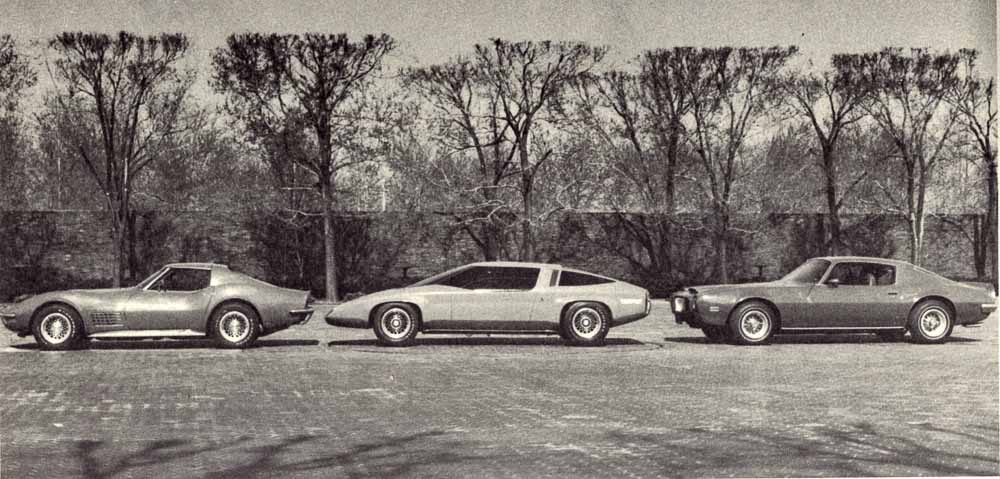
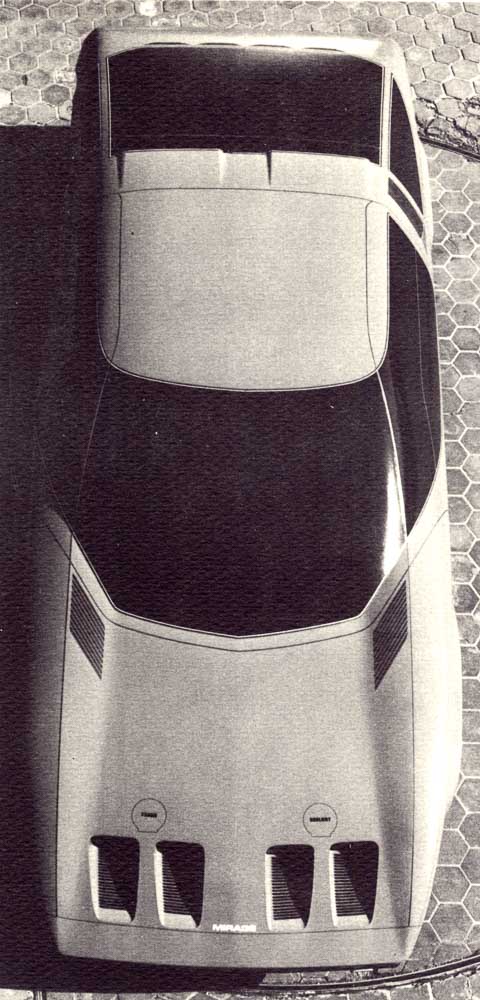
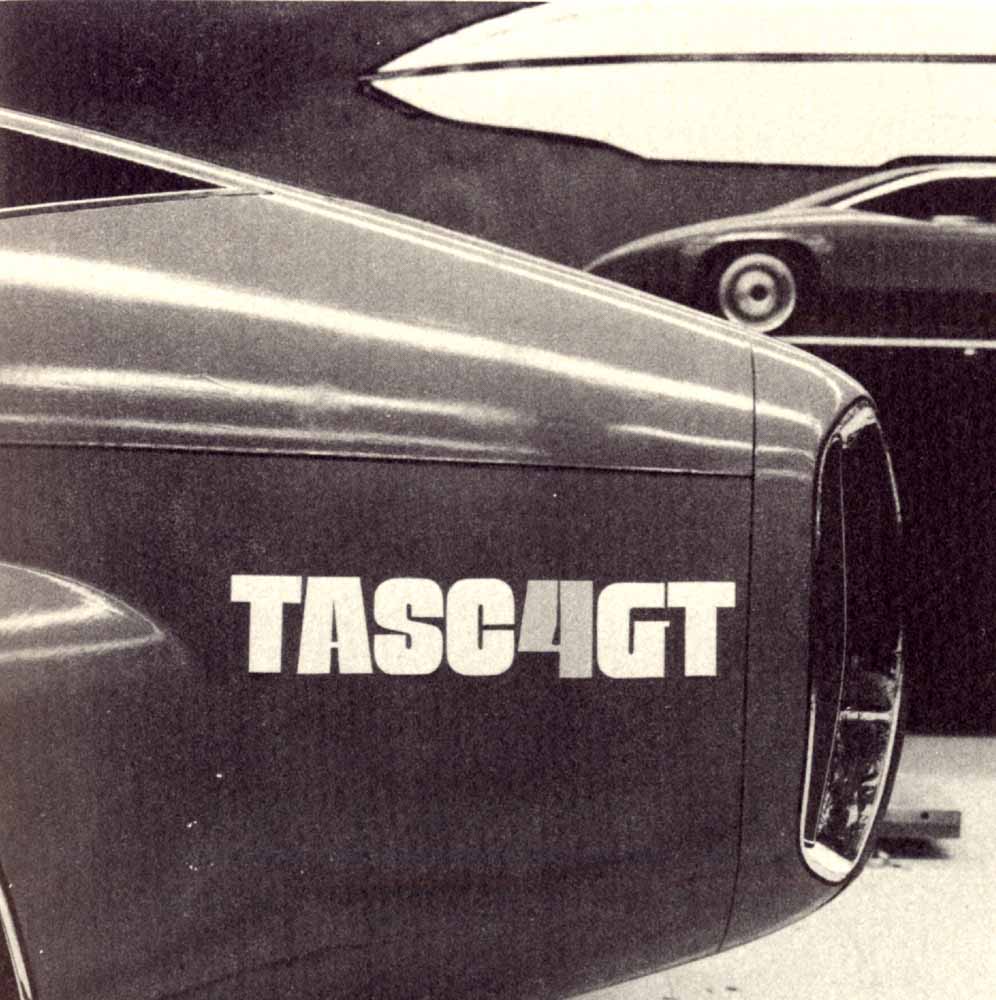
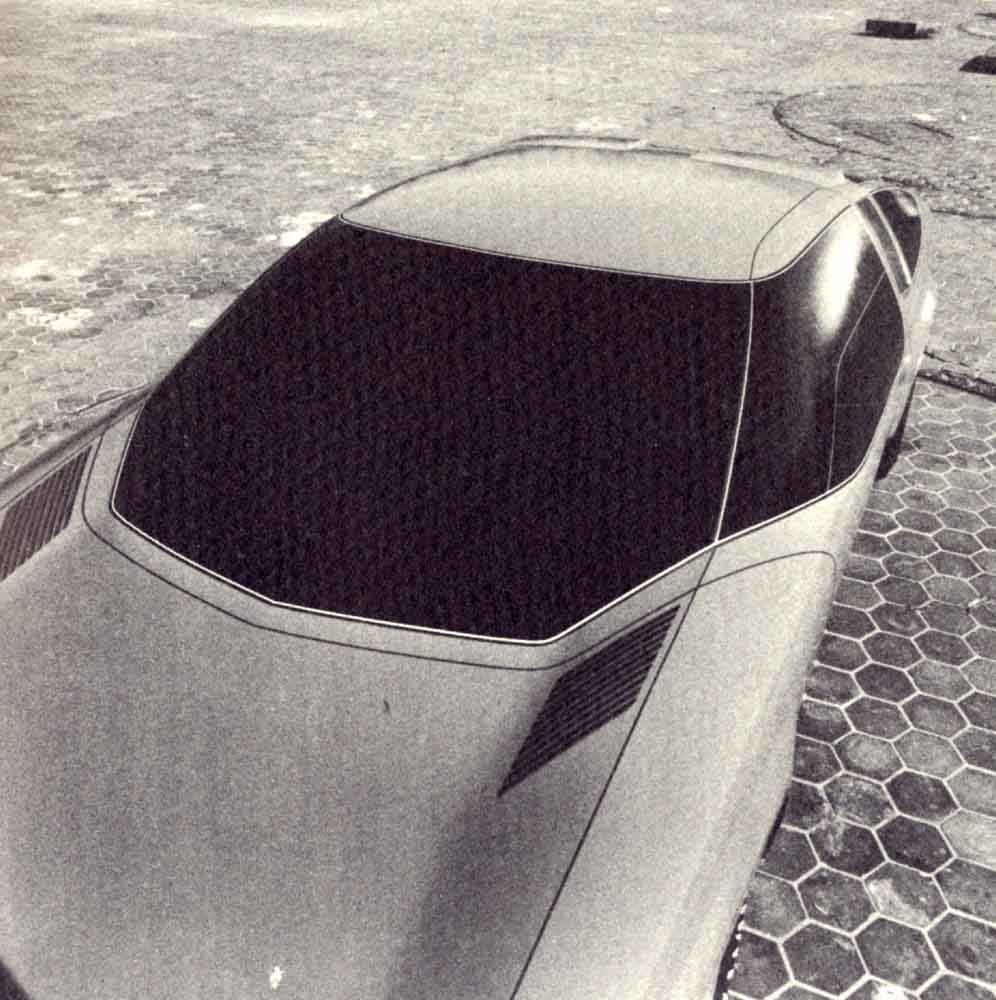
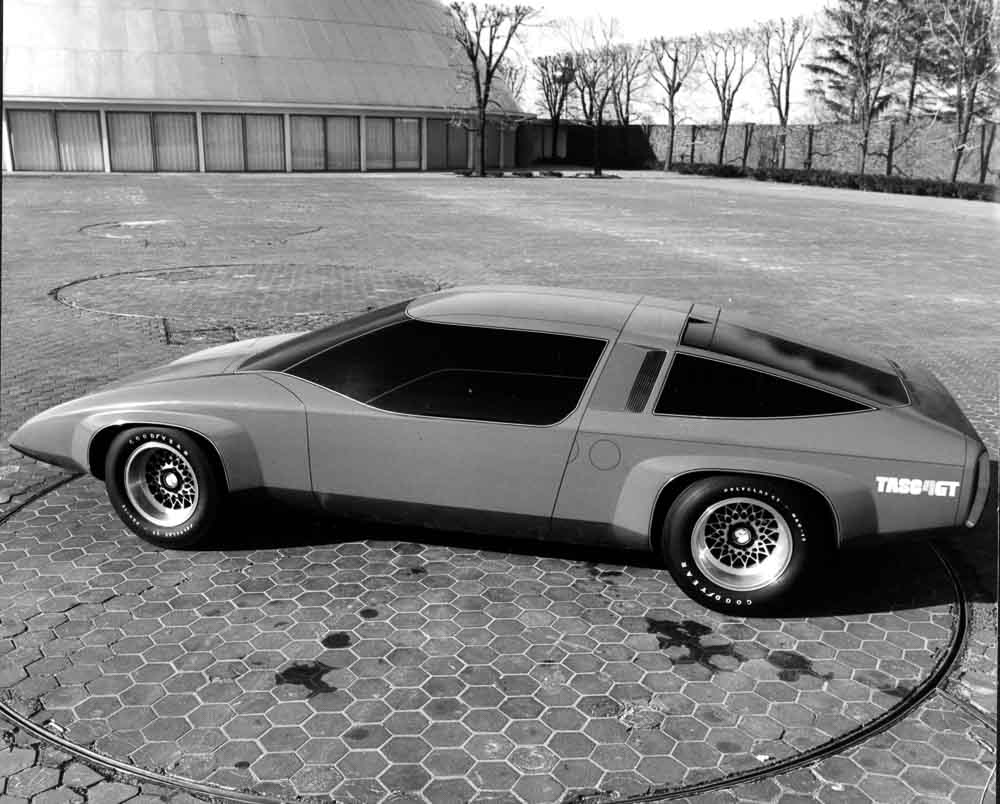
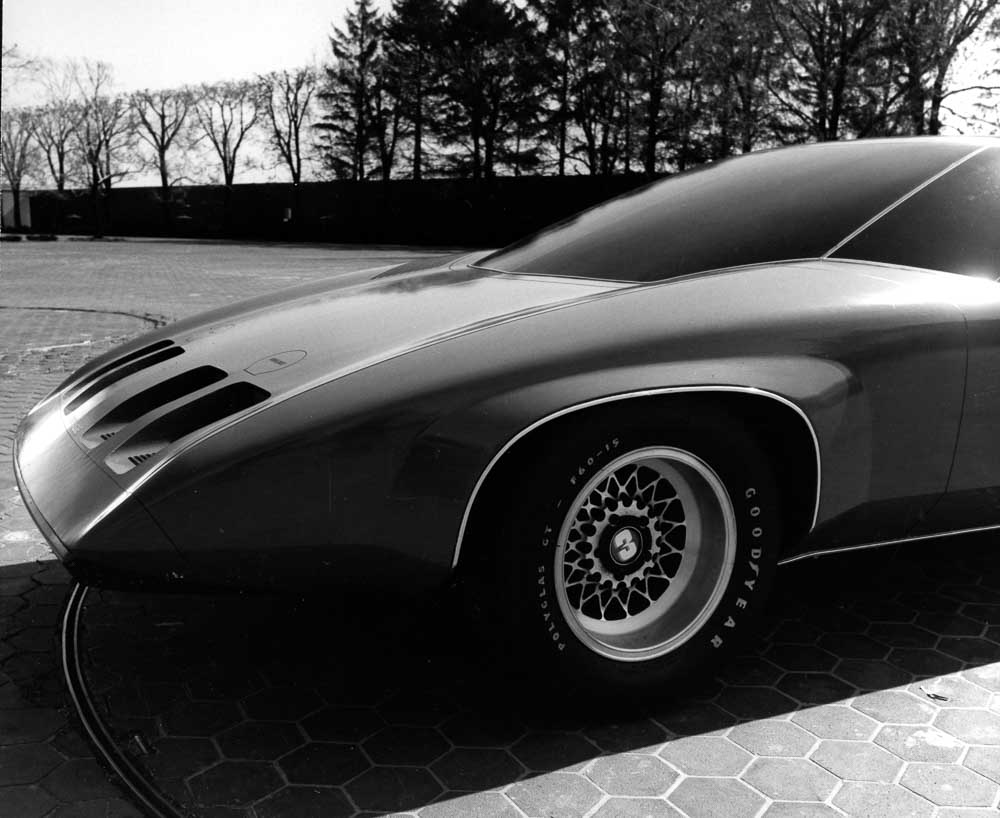
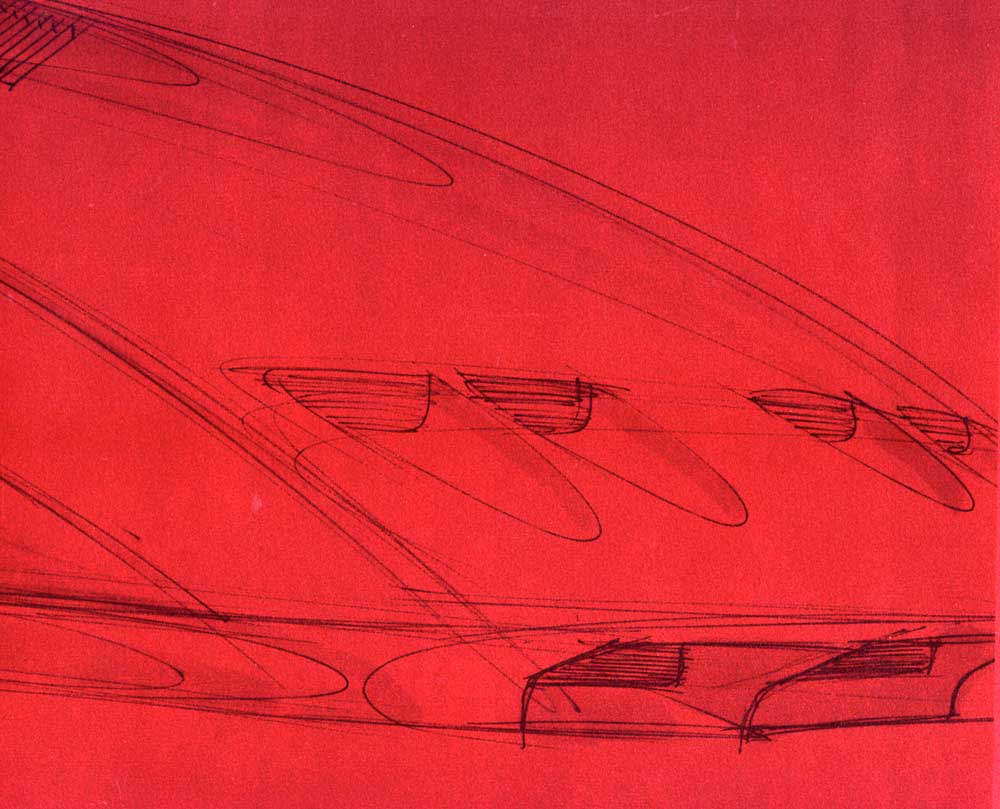
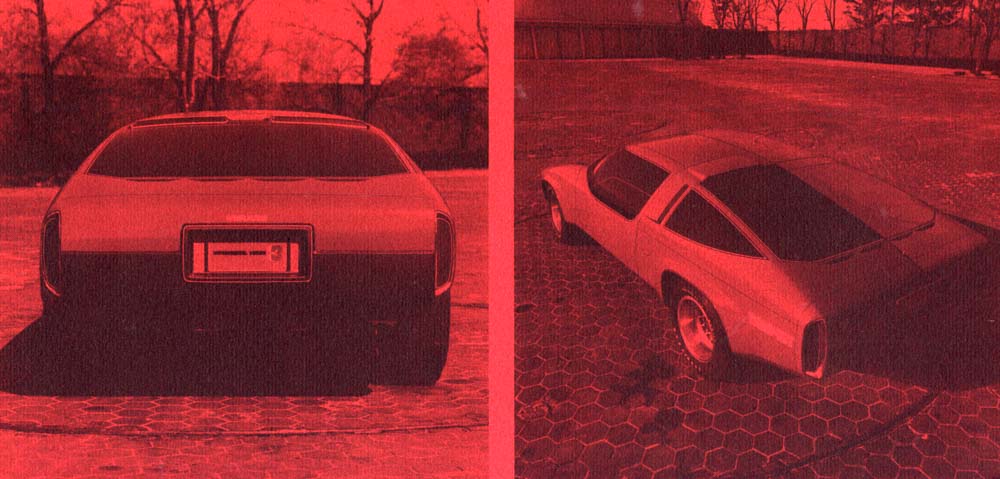
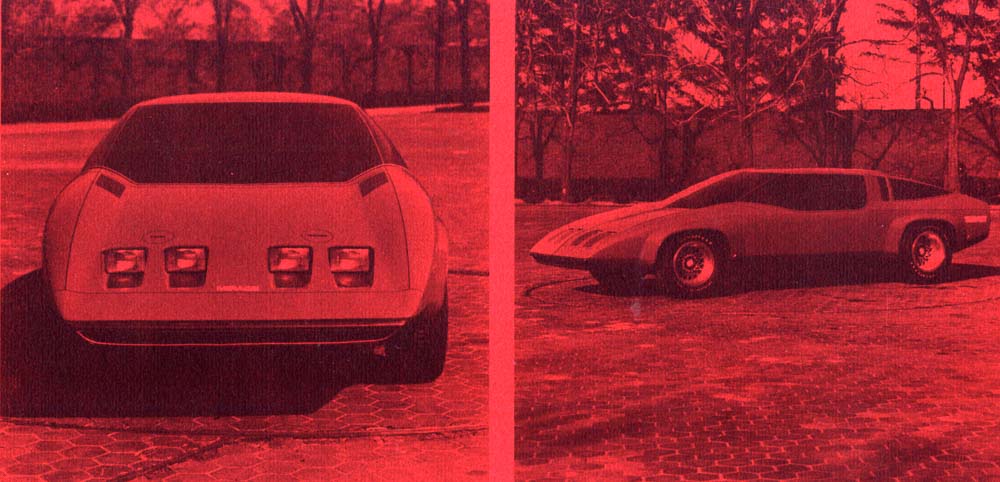
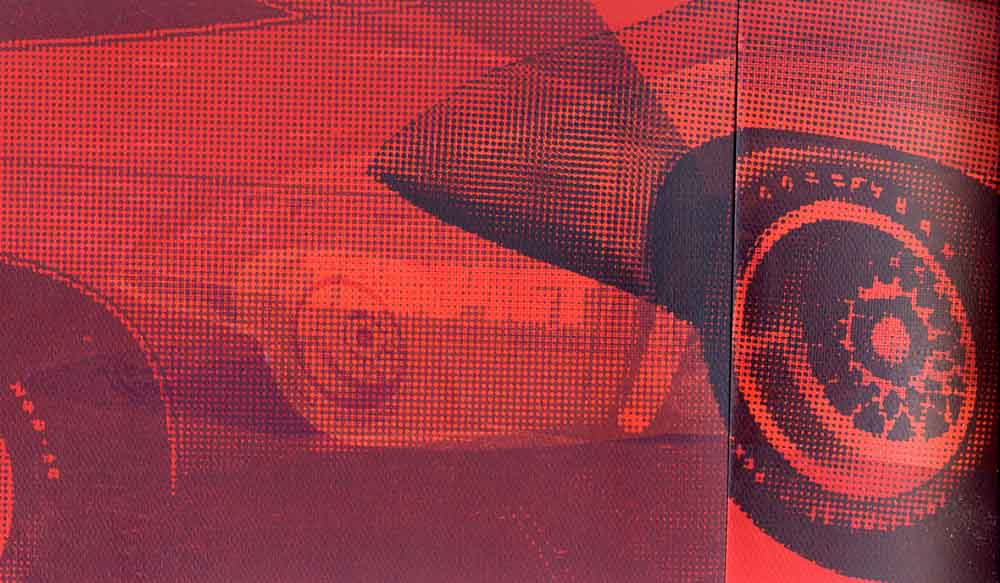
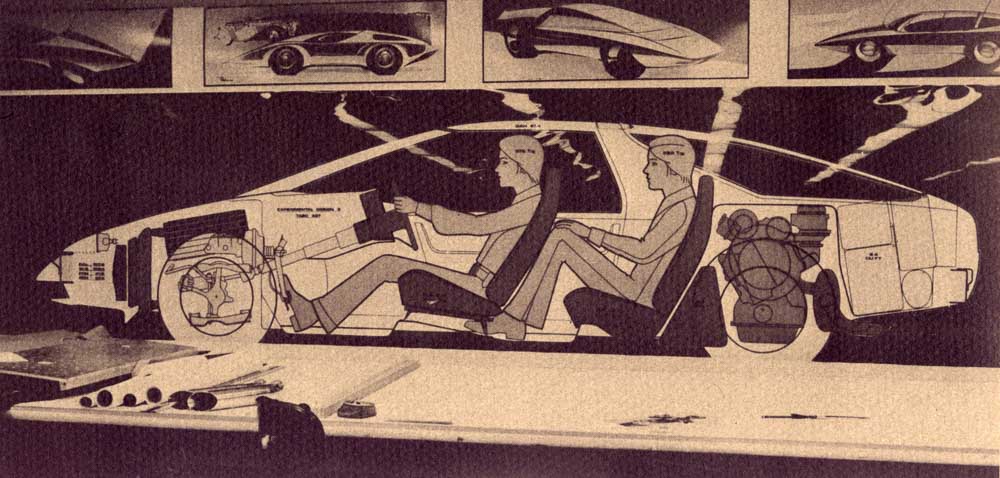
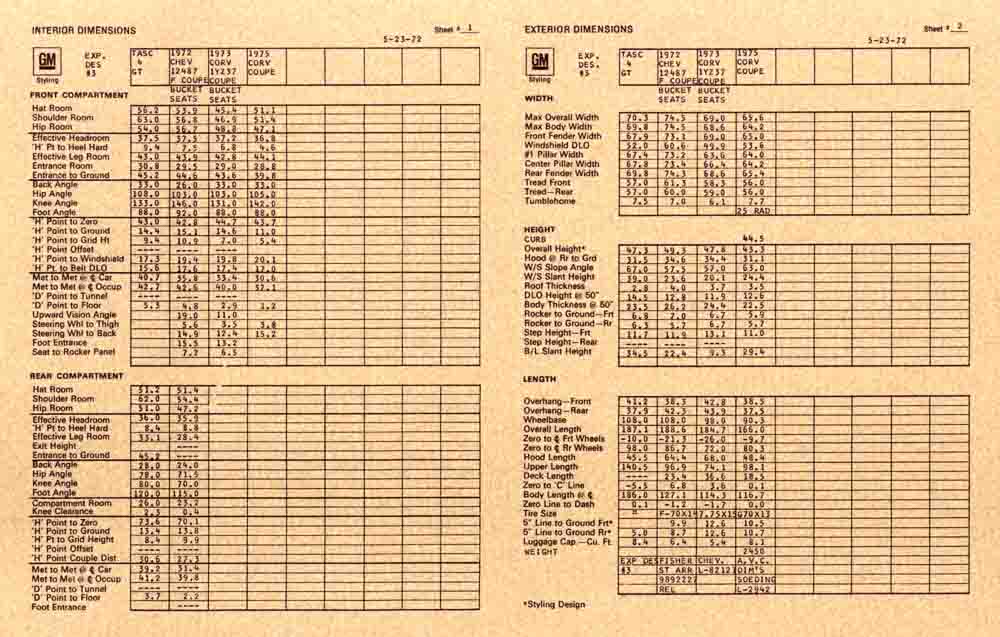
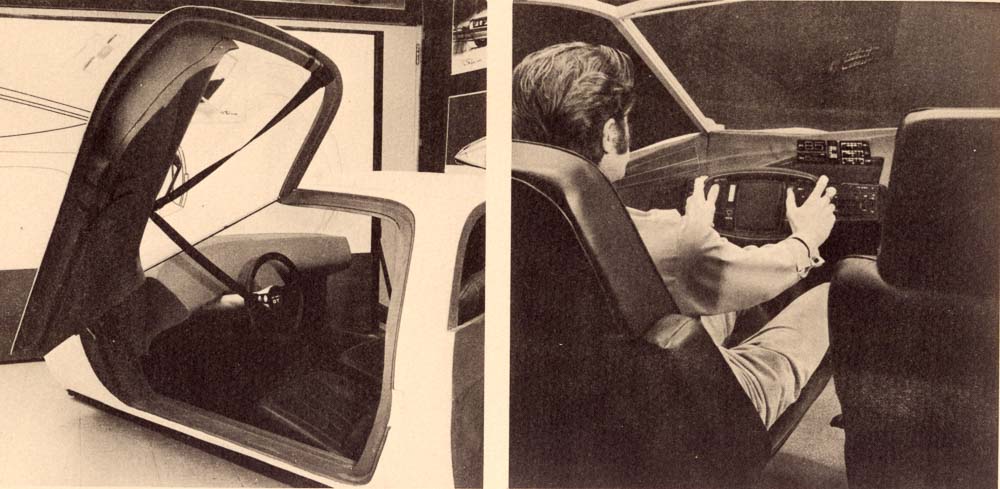
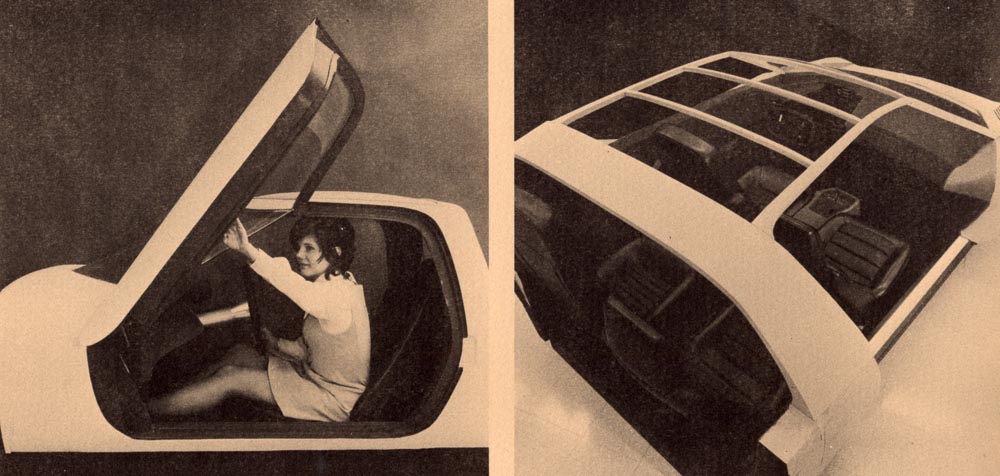
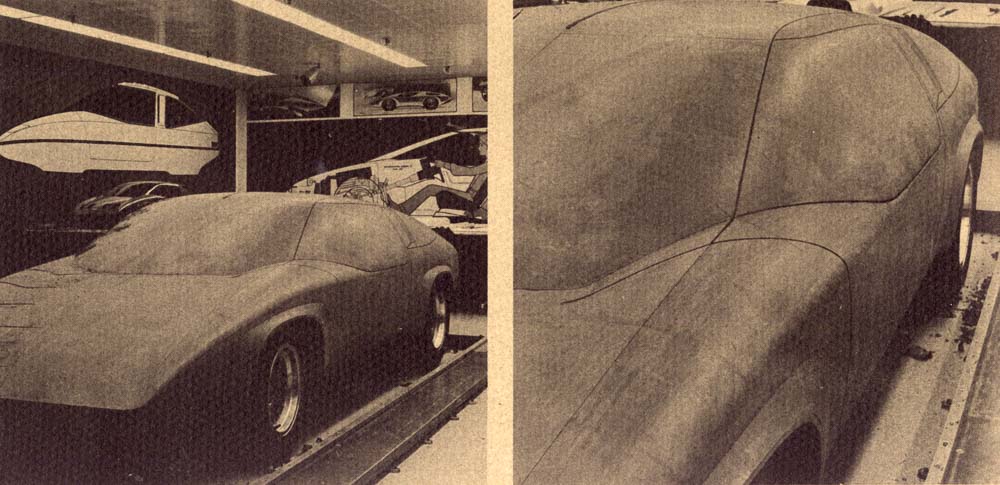
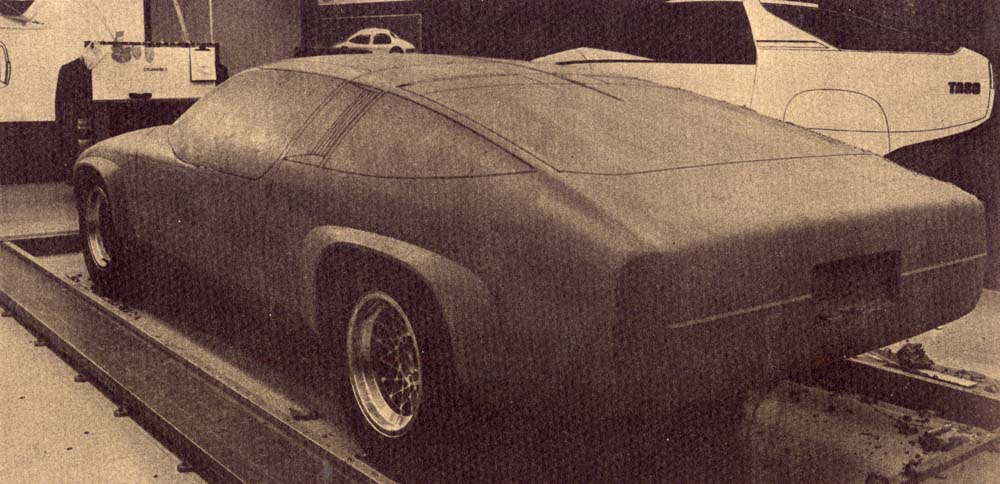
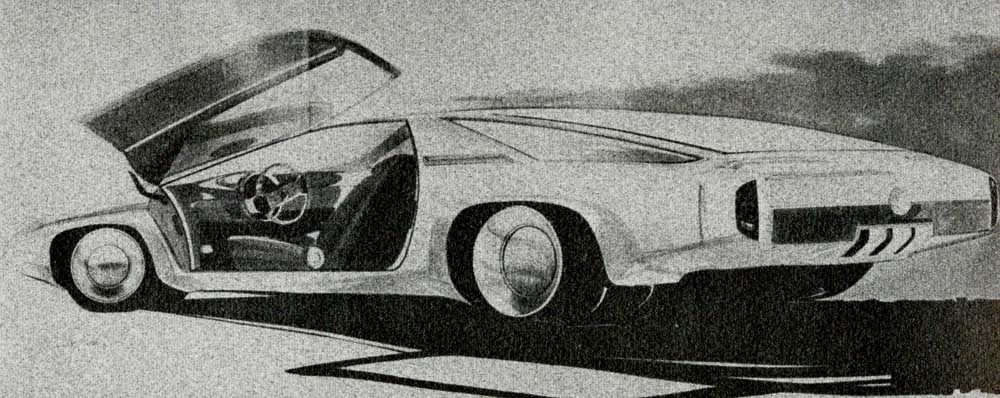
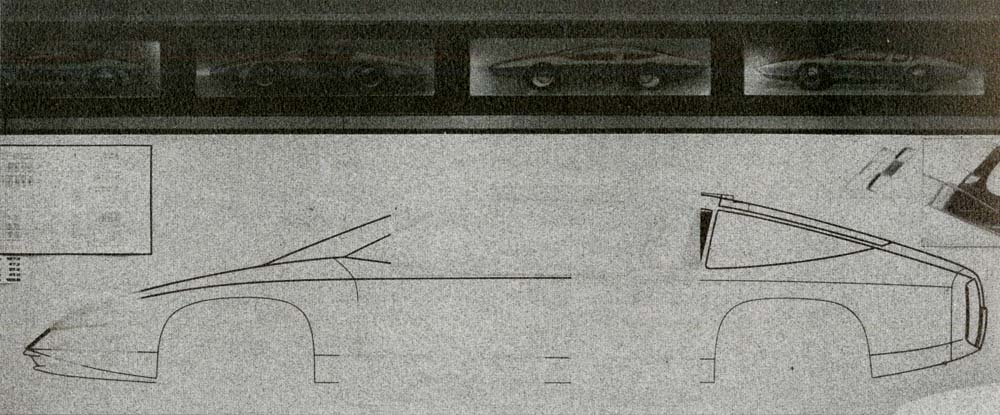
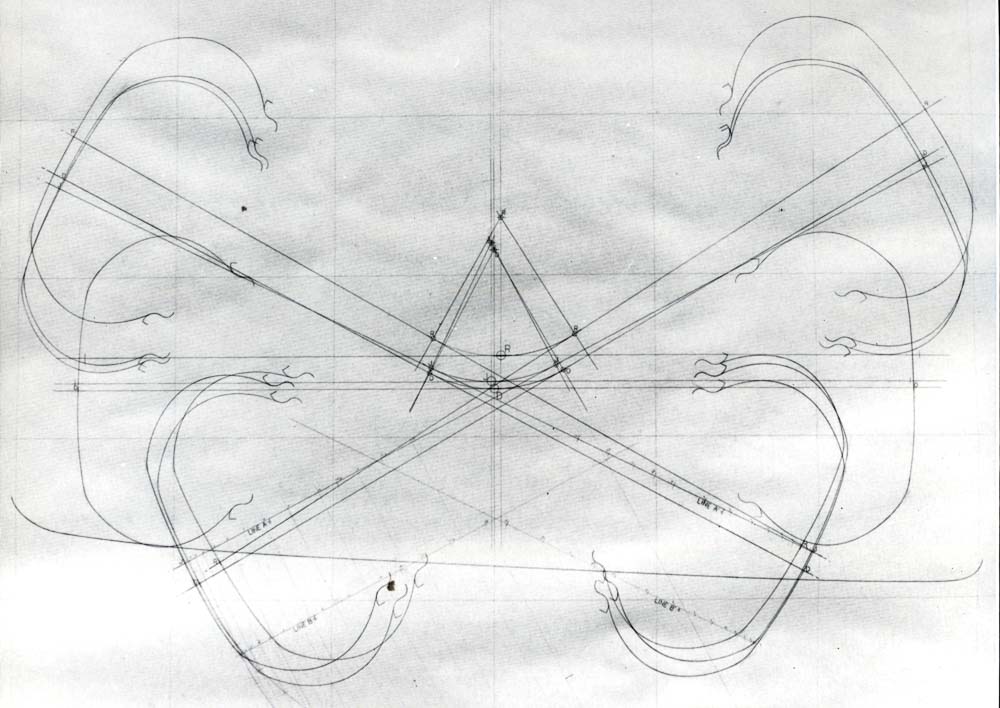


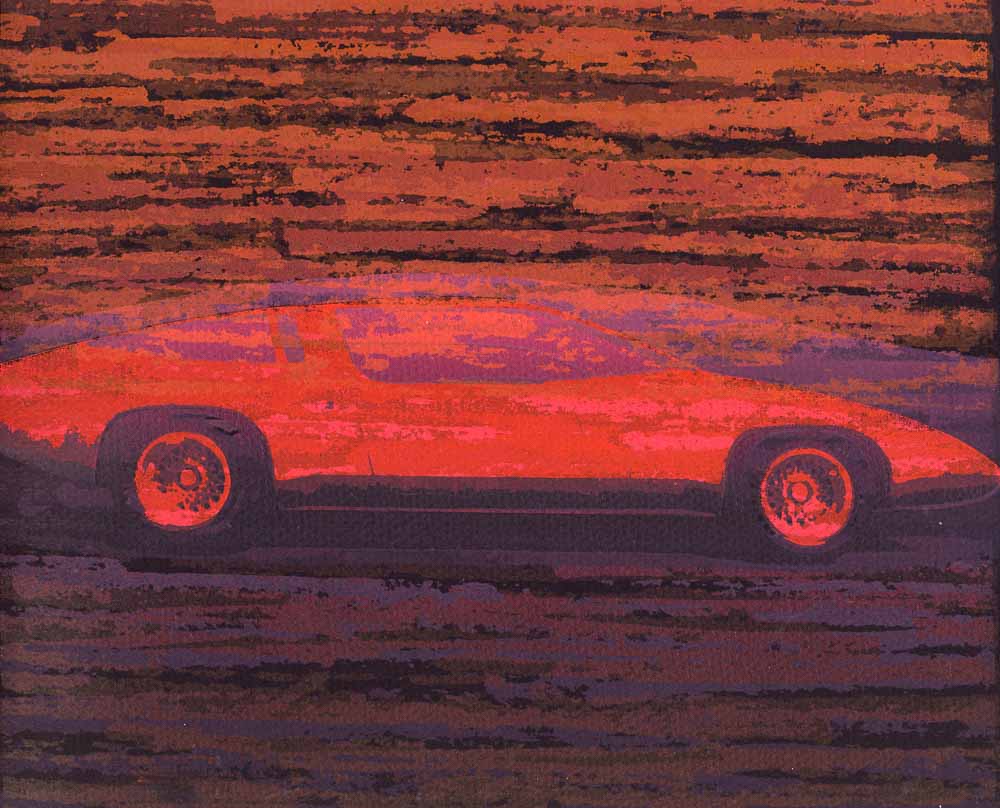
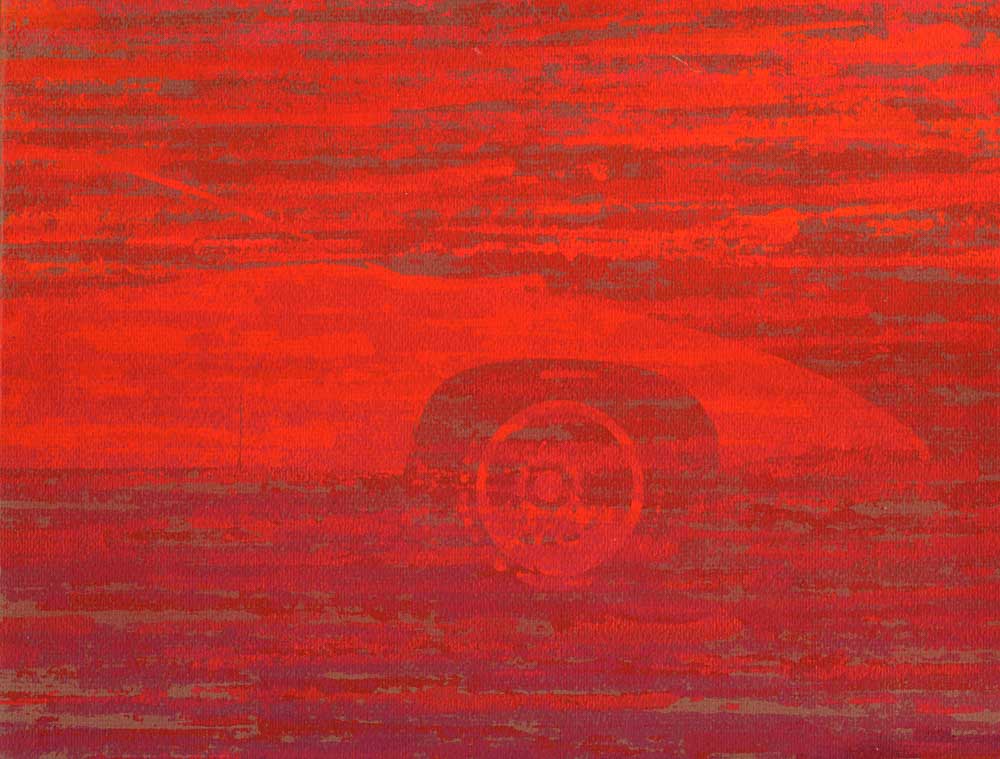
Dick,
Revealing story about a great design opportunity to do something exciting with new, fresh forms unlike anything else back then, and your design would look good today! One can tell you had fun working on this project. Thanks for sharing this with all of us…
Regards, John
John M. Mellberg
It is interesting to think that the engine technology is now at hand to power this car easily, the 2.0 litre turbocharged 4 cylinder. It would be great to make one.
Dick Ruzzin’s story about the TASC program is very interesting and it might serve history a bit more if I expanded the story to a few years before the TASC program came into being.
In 1964, I was Executive Staff Assistant to Chuck Jordan who was then Director of Design . I discovered that GM and MSU were going to start an MBA in Detroit in the evenings and this effort was being spearheaded by then GM President Ed Cole and Bill Crissey, Dean of the Business School at MSU. I approached Chuck about enrolling in this 2 year night program and he said OK, but I should still do my regular work for him as MSU should not detract from my job in any way.
I studied and worked diligently and graduated two years later in 1966 with honors as I had really aced all of the courses.
Only at a 40th AMP/MSU reunion and in talking with one of my old professors did I discover that Ed Cole had monitored all of the GM student’s grades and since I graduated as a member of Beta Gamma Sigma Honorary, that is probably why Ed Cole told Bill Mitchell to assign me to a newly created group, GM Design Automotive Forward Planning. My group was assigned to work for Clare MacKichan, Executive of Advanced Design.
I took over a year to weed out some folks and find new ones, but in the end, we had an outstanding group of individuals and my group became the epicenter of good planning for GM.
Working for Mac, my group was embroiled in the TASC program. In fact, I created the name TASC or Total Automotive Systems Concept as I believed the name described the program accurately. Our group prepared the TASC book and I remember writing the power plant section which stated that GM had a multitude of eight cylinder engines with no commonality within or between divisions.
Mac’s studios made the clay models and seating bucks showing everything from Camaro to Cadillac. These studies proved that all GM products could be built on three common shoulder room platforms with incremental changes in wheelbase.
We had a variety of shows to Corporate and Divisional executives. I was part of all of them and we fully explained the program to everyone.
The TASC program was not adapted. Why? Because the Divisional Executives had their bonus based on their Divisional content. To a one, they agreed it was a great program but they would not support it for fear of a compensation loss.
Today, GM is doing a program similar to TASC. We were just 50 years too soon!
As an aside, great GM Forward Planning came to an end when my group was assigned to the newly formed Corporate Planning Group. We lost our interaction with the designers, they challenged us with new ideas and we told them when their designs were too expensive or we made a new niche product for them to consider. But that all came to an end in 1974.
I went to Pontiac as Assistant Chief Engineer in 1976 and came back to GM Design in 1978 when new VP Irv Rybicki invited me back to replace the ailing Clare MacKichan as Director of Engineering. Alas, my TASC book has been lost with my many household moves, but I sure wish I still had a copy!
Ken Pickering
A question about the spelling of his name. When checking online most spell his name Clare. What evidence do you have for it being spelled Claire? Thank you.
Thanks for this article. Would it be possible to get a story on the development of the TASC descendants like the X and A cars? These were vital cars that shaped GM in the 1980s for good or bad.
Mr Ruzzin, Could I ask you a question about the tasc project? Thank you in advance
Gary Molitor – You are correct about the spelling. The name was Clare MacKichan and we all called him “Mac”. Also, it is Ned Nickles, who is also commonly misspelled.
Ken Pickering
Mr Pickering, Thank you for sharing your testimony and I wish that you can find your book. It would be great to show us this book here.
Edmond, the scans in this post are from the book.—Dean’s Garage
I will try to clarify some of the comments and timing. It is important to note that the WORLDCAR program that spawned the TASC program started about 1968. Almost 50 years ago and the TASC4GT was done in 1972, 45 years ago.
Mack wanted to do WORLDCAR not only for Germany and the rest of Europe but also for the other countries that built GM products like Brazil, and Mexico.
That was a good try but started too late as Opel was way ahead of us so we moved into the next opportunity much earlier. One day Jim Juif came into Overseas Studio with dimensions for three sections and three overall lengths. That was the beginning to what would later become the TASC program. I was the Assistant Chief Designer so it was my task to do these kind of projects. I laid the three sections out from the same centerline and we proceeded to evaluate shoulder room and seat spacing until we had three good solutions with a nice evolution from the narrowest to the widest car. Same with the wheelbases and overall lengths.
Pictures were taken and a presention was developed for Mack and Jim to give to some corporate group. That was the beginning of what would become the TASC Program.
Since I lived through the entire TASC program from the very beginning to production vehicles I do not think you could call the effort half-hazard. The change for the GM engineering and manufacturing culture was enormous. There were very few really good examples of FWD, certainly none that required the variety required for four GM divisions. The way things were done in those times when the industry was very competitive and moving forward into safety, aerodynamics and other challenges like weight and sound reduction was not settled as it is today. The X Cars handled very well, the Chevrolet X-11 was very good given the standard of the day. You cannot use standards of today to compare cars that were engineered 37 years ago. The A Cars that followed had more development time and were very good in every respect. The A Car was also part of the original TASC program with a 100MM longer wheelbase for additional rear seating. The perception of room was greater since they were notch back sedans not hatchbacks.
The TASC4GT engine package had an integral trans-axle which was a dimensional advantage for the rotary powertrain.
There are several very detailed accounts in various historic automotive publications that describe the entire program very well. With four divisions participating there was quite a bit of variety and complexity.
The book that Ken describes is one that details the entire program. We made special books for corporate executives every time we had a major presentation. The images in this presentation are from a special book about the TASC4GT that was done by Homer Mitchell, a special silkscreen artist at Design Staff. There were only three copies made.
DICK RUZZIN
I am surprised. I didn’t realize the roots of the X, J and A bodies went that far back, especially because the Citation seemed like it was pretty haphazardly engineered at the time. (I guess the P-body Fiero also came from this program as well in reality.) I always had the impression GM was playing catch up to the other manufacturers when it came to the transition to FWD. Still, it seems to me, that the top brass at the General were fighting it tooth and nail. Maybe, if they embraced it and spent a bit more, they could have risen to the top of the heap and avoided all the drama that happened down the line. All the stories I’ve read from GM veterans of the era speak to the seemingly oppressive corporate culture of the day. One can’t help but wonder what might have happened if that wasn’t the case.
Thanks Gary and Dick for publishing the story. Special thanks to Ken Pickering for his inside perspective. Would like to hear more from Ken.
For me the TASC Program was so impressive that I negotiated a transfer from the Body Development Studio to Advanced Vehicle Concepts, under Otto Soeding. At the time, I thought if Mack was responsible for a program that well thought out and comprehensive, I wanted to work for him. The fact that the styling was of such high quality was an added bonus.
Later I realized the enormous change in culture that the engineers had to take on when moving from rear wheel drive to front wheel drive with unidody construction. Why wouldn’t there be some resstance? There was also a lot of enthusiasm.
Definately NO! The X cars were not half hazardly engineered.
The next evolution of the program, the extended A cars were very successful from a product development standpoint, trouble free and good looking.
We successfully, after three tries, proposed the EUROSPORT to Chevrolet, off the Chevrolet Celebrity, no one else in the industry had anything like it.
The engineers involved had a huge challenge and deserve great credit.
Dick Ruzzin